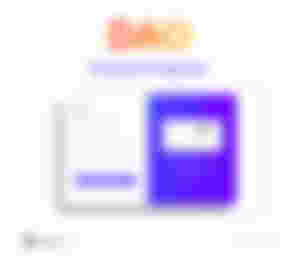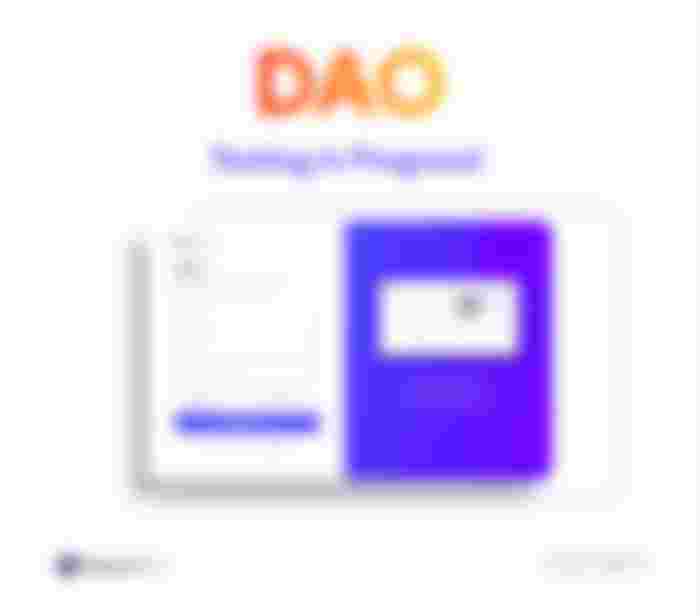Hello Everyone,
We’re moving to a point that we dreamed of back at the launch of PhoenixDAO, whilst we are developing V.2.0 of the PHNX Spot Staking platform and working on the integration of Numio technology we have kicked off beta testing. This guide will evolve as the DAO gets updated but right now, to see what the testers are playing with we are sharing the DAO guide.

Installation and Configuration
MetaMask Installation
An Ethereum Wallet in your Browser. MetaMask is a browser extension for storing cryptocurrencies and accessing Ethereum enabled distributed applications or “dApps” in your browser.
Go to your browser extensions and search for MetaMask and then add that extension to the browser.

MetaMask configuration
Initially, you will be asked to import the wallet or create a new one.
If you have already created a wallet before then import it using it’s private key otherwise select to create a new one.
MetaMask will provide you with the secret phrase this is required for recovering a private key. Download it, memorize it or write it down someplace safe and make sure no one else can get access to it. If you are to lose this and lose access to your funds they are lost!

On the next step it will ask you to enter the phrase in the same order as it was originally presented.
And then just after reading and agreeing to their terms and conditions Boom!, your decentralized wallet is created on MetaMask. To access it click on the MetaMask icon on the top right corner of your browser (where you will also find your other extensions.
Getting into app and connecting wallet
Open the Phoenix-Dao app and select the “Login with MetaMask” button.
Select MetaMask to connect the wallet.
Select the account you want to connect to and click next.
Make sure you switch your network to test-net (Rinkeby Ethereum Network).
For confirmation, click on the extension of the MetaMask. On top if Rinkeby is not written then click on drop-down and select Rinkeby from it.
Import Token in MetaMask
Open meta mask and select add token on the bottom
Select ‘Add custom token’ tab on the top
Add contract address here and click ‘Next’.
Token address : 0xfe1b6abc39e46cec54d275efb4b29b33be176c2a
Features of the App

Submit A Proposal
To submit a proposal, follow the following steps
Navigate to the Proposals section.
Click on the Submit button on the top right corner of the screen.
Here the user can submit his proposal.
On Submitting Proposal users MetaMask extension open’s and users have to pay a transaction fee.
After submitting, the proposal will not be visible until it gets verified and it can either get accepted or rejected.
If the proposal gets accepted it moves to the first round of voting where other users can upvote on the proposal.
USER DETAILS
This is the first section of submitting a proposal.
Here the user enters his personal details.

PROPOSAL DESCRIPTION
This is the second section of submitting a proposal.
Here the user gives the general details of his proposal.
You also give the reason for submitting the proposal and the reason for using our platform.
Collateral is the amount of PHNX users need to provide in order to get the proposal approved, this is a pre-set amount controlled by the DAO.
PROPOSAL MILESTONES
This is the third section of submitting the proposal.
Here the user breaks his app down into individual milestones.
Users can add any number of milestones.
Users must set the estimated days required for the completion of the milestone and also the amount of PHNX which each milestone requires from the DAO grant.
PROPOSAL SUBMITTING
This is the last section of submitting a proposal.
This is where all the milestones are listed down.
The user can review his milestones and delete any milestone if needed.
PROPOSALS
Here the users vote on the Proposal if they think it is going to benefit the project and its users, the community will also decide whether the fee is competitive based on the grant request. If the Proposal gets the required amount of votes in the required time frame, then it moves to the voting section.
The amount of votes and the time-frame is pre-set in the app before submitting a proposal.
Proposals can have different voting time and minimum votes required for them to move to the second round of voting. Initially these parameters are pre-set by the core team.
Each user can only vote once, this is a free off-chain vote.
The voting date assigned to the proposal depends upon the date it gets the minimum upvotes.
If a proposal passes the first round of voting before the 15th of the month then the proposal’s second round voting date gets assigned to the following month.
If a proposal passes the first round of voting after the 15th of the month then the proposal’s second round voting date will skip the following month and go live the next month.
Let’s understand the voting dates by way of an example. Suppose we have two proposals by the name of “A” and “B”, let’s suppose “A” moves to “Voting” on the 14th of January so it will get the Voting date of 2nd February, it’s because it got the required votes before 15th of the month. Now coming to the proposal “B” let’s say it moves to “Voting” on 17th of January so it will get the Voting date of 2nd March, it’s because it got the required votes after the15th of the month
VOTES
This section has two divisions.
UPCOMING VOTES
This is the second round of voting.
These are the proposals on which the users can stake once their date is reached.
Here the users can stake on the Proposals.
PAST VOTES
These proposals have passed through the off-chain voting section and have either passed or failed.
Passed — the proposal gets the status of “Accepted” and can be viewed on MyProjects → ActiveProjects tab. The user can now start working on his project and can mark his milestones complete, and after review the user can get the funds they requested.
Failed — the proposal will get the status of “Rejected”. The proposal can only be viewed on the MyProjects → Proposals tab. The user cannot get his funds because the proposal couldn’t reach the criteria but the user can make changes to his proposal and can re-submit his proposal as a new one.
STAKING
This is the second round of voting.
Users can stake on the Proposals by clicking on the “Vote now” button.
No matter how much you stake it would only be considered one stake.
Users can stake a maximum of 20,000 tokens for a maximum 365 days.

MY PROJECTS
The MyProjects section has two divisions.
Active Projects.
Proposals.
ACTIVE PROJECTS
In this section users can view their ongoing proposals.
The user who submitted the proposal can now mark his milestones completed.
These milestones will first be approved before being marked completed.
They can also be marked as incomplete depending on the progress of the milestone.
PROPOSALS
In this section a user can view only his proposals regardless of the status.
The user can also delete his proposal if it’s not approved yet.

DAO USER SECURITY — NUMIO
In the future versions we will integrate Numio KYC to ensure a level of security, safeguarding from bad acting and compliance. As the Blockchain space matures it is important to recognise future trends..





